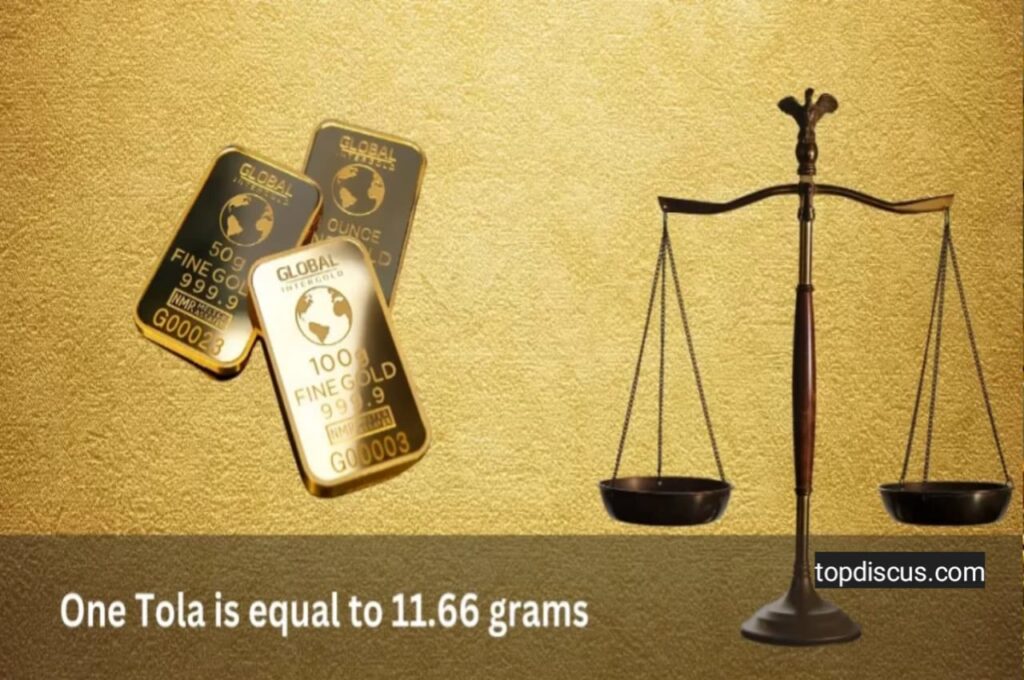In this blog post, we’ll explore everything there is to know about Tolas – from its definition and history to its conversion into grams. Have you ever wondered how many grams are in one Tola? Or perhaps you’re curious about the origins of this intriguing measurement? Well, you’ve come to the right place! So sit back, relax, and prepare for a journey through time as we unravel the secrets behind this ancient unit of measurement. Let’s get started!
“Click Here to Measure Grams In Tola”
Defining a Tola Measurement:
Before we dive into the depths of the Tola, let’s first establish what exactly it is. Originating in the Indian subcontinent, a Tola is a unit of measurement commonly used for weighing precious metals and gemstones. It holds significant cultural and historical value across various South Asian countries.
Interestingly, the term “Tola” is derived from the Sanskrit word “tol,” which means weight or balance. Traditionally, it was associated with silver currency coins known as “tolas,” used during ancient times. In terms of its actual value, one Tola is equivalent to approximately 11.66 grams or 180 grains. However, it’s important to note that slight variations in conversion may exist depending on regional practices.
The usage of Tolas extends beyond just measuring precious metals and gemstones – it has found applications in other areas as well. In some cultures, it serves as a unit for measuring traditional medicines and ingredients in cooking recipes. As our journey through the world of measurements continues, we’ll now shift our focus towards unraveling the history behind this intriguing unit – exploring how it evolved and its significance today. Stay tuned! How many Grams are in One Tola?
The History of Tola as a Unit of Measurement:
The history of the tola as a unit of measurement is fascinating and spans centuries. The origin of the tola can be traced back to ancient India, where it was used as a traditional weight for precious metals such as gold and silver.
During the Mughal Empire in medieval times, the tola became an official unit of measurement across South Asia. It was widely used in trade and commerce, particularly in transactions involving jewelry and gemstones. The word “tola” itself has its roots in Sanskrit, meaning “weight.” This shows how deeply ingrained this measurement system was in Indian culture.
Over time, different regions adopted their variations of the tola. In some areas, one tola equaled 12 Masha or 180 grains. In others, it equaled 10 grams or even slightly more. Despite these regional differences, the basic concept remained consistent – the tola served as a reliable measure for valuing precious metals and other commodities.
Today, while many countries have transitioned to using metric units like grams and kilograms for weighing purposes, there are still pockets where the tola continues to hold significance. In countries like India and Pakistan, it is often used informally by jewelers who cater specifically to customers familiar with this traditional unit of measurement.
Understanding the history behind the tola provides insight into its cultural importance and lasting legacy. While its use may be less widespread today than in previous eras, it remains a tangible link between traditions and modern practices relating to weight measurements. How many Grams are in One Tola?
Converting Tola to Grams:
If you’re unfamiliar with the term “tola,” you might be wondering how it compares to more commonly used units of measurement like grams. Well, let’s delve into the conversion process and shed some light on this topic. To convert tola to grams, we need to know that one tola is equal to approximately 11.66 grams. This conversion factor allows us to easily calculate weight measurements in different systems.
In many parts of South Asia, particularly India and Pakistan, the use of the tola as a unit of measurement is still prevalent today. It holds cultural significance and is often used when measuring gold or silver jewelry. When converting from one system of measurement to another, precision is key. Knowing how many grams are in one tola can be useful for individuals who may encounter both forms of weight measurements in various contexts.
By understanding this conversion ratio, we can bridge the gap between two different units and make accurate calculations without any confusion. So next time you come across a weight measurement listed in Tolais, remember that each one corresponds roughly with 11.66 grams! Click Here To Visit Our Homepage.
Common Uses for Tola Measurement:
The tola, a unit of measurement commonly used in South Asia, has various practical uses in everyday life. One of the most common applications is in the field of jewelry. When purchasing gold or silver ornaments, people often refer to the weight in tolas as it provides them with an accurate measure of their investment.
In addition to its use in jewelry, the tola measurement is also widely employed when trading precious metals and gemstones. It allows buyers and sellers to have a standardized unit that can be easily understood across different regions.
worldwide. Furthermore, the tola measurement finds its place in traditional medicine practices. In Ayurveda and other ancient healing systems, herbs, and ingredients are often measured using this unit. This ensures precise dosages for making herbal remedies.
Even though modern units like grams or ounces are more prevalent today, some individuals still prefer using the tola for cooking purposes. Recipes handed down through generations may specify measurements in this traditional unit. While no longer as commonly used as it once was due to global standardization efforts, the versatility of the tola continues to make it relevant today for specific cultural contexts and industries where precision matters. How many Grams are in One Tola?
How Many Grams are in One Tola?
 When it comes to measuring precious metals like gold and silver, you may have come across the term “tola.” But what exactly is a tola? In simple terms, it is an ancient unit of measurement commonly used in South Asia, particularly in countries like India and Pakistan.
When it comes to measuring precious metals like gold and silver, you may have come across the term “tola.” But what exactly is a tola? In simple terms, it is an ancient unit of measurement commonly used in South Asia, particularly in countries like India and Pakistan.
The History of Tola as a Unit of Measurement:
The origins of the tola date back centuries ago when it was first introduced during the Mughal Empire in India. It was widely used by jewelers and merchants for trading purposes. Over time, this measurement unit gained prominence and continued to be used even after the colonial period.
Converting Tola to Grams:
Nowadays, with the advent of standardized metric systems, converting tola into grams has become necessary for international trade purposes. One tola is approximately equivalent to 11.66 grams or 180 grams.
Common Uses for Tola Measurement:
Although not as prevalent as before due to the adoption of metric units globally, the use of a tola persists in some regions. It is primarily utilized when purchasing gold jewelry or determining its purity level.
Modern-Day Uses and Relevance of the Tola Measurement:
While gram-based measurements are more widely recognized worldwide today, understanding how many grams are in one tola can still be relevant if you’re dealing with older jewelry pieces from South Asia or if you’re interested in traditional practices.
Modern-Day Uses and Relevance of the Tola Measurement:
The tola, a unit of measurement deeply rooted in South Asian culture, continues to hold significance in modern-day society. Although it may not be widely used or recognized outside of this region, it still plays a role in certain industries and traditions. In the jewelry industry, for example, the tola is often used as a standard unit for measuring precious metals such as gold and silver. Many customers prefer to buy jewelry based on weight rather than carat size, making the tola an important measurement tool for both buyers and sellers.
Additionally, some traditional recipes and herbal remedies still rely on measurements using the tola. While most modern kitchens have adopted metric or imperial systems of measurement, there are still those who value the precision that comes with using traditional units like the tola.
Furthermore, cultural ceremonies such as weddings often involve gifting gold or silver items measured in tolAs. This demonstrates how deeply ingrained this unit of measurement is within customs and traditions. Despite its limited use beyond South Asia today, the relevance of the tola lies in its connection to heritage and tradition. It serves as a reminder of our rich history while also providing practical applications in specific industries and practices.
So next time you come across someone referencing a weight in tolAs or stumble upon an old recipe calling for “one-tola” measurements – remember that it carries more than just numerical value; it represents centuries’ worth of culture and legacy. How many Grams are in One Tola?
Conclusion:
The tola measurement has a rich history and continues to hold significance in various cultures around the world. While it originated in ancient India as a unit of weight for precious metals, today it is primarily used for measuring gold and silver.
One tola is equivalent to approximately 11.66 grams. This conversion factor allows individuals to easily calculate the weight of gold or silver in grams when given the weight in tolas. Despite the increasing adoption of metric units like grams and kilograms, the tola measurement remains relevant due to its cultural importance and widespread use in jewelry markets across South Asia and parts of the Middle East.
Whether you are purchasing gold jewelry or trading precious metals, understanding how many grams are in one tola can be immensely helpful. By knowing this conversion ratio, you can make informed decisions based on accurate measurements. While global standards have shifted towards metric units, embracing diversity in units of measurement allows us to appreciate different cultural practices and traditions associated with them. The ongoing use of traditional measurements like the tola highlights their lasting impact on our society.
So next time you come across discussions about gold weights or hear someone mention a certain amount in “tolas,” you’ll have a better understanding of what they mean!
Remember that knowledge about different systems of measurement enriches our understanding of diverse cultures.
